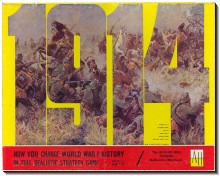
A social movement is a type of group action. There is no single consensus definition of a social movement. They are large, sometimes informal, groupings of individuals or organizations which focus on specific political or social issues. In other words, they carry out, resist, or undo a social change. They provide a way of social change from the bottom within nations.

Mobilization, in military terminology, is the act of assembling and readying troops and supplies for war. The word mobilization was first used, in a military context, to describe the preparation of the Imperial Russian Army during the 1850s and 1860s. Mobilization theories and tactics have continuously changed since then. The opposite of mobilization is demobilization.
A short-term mission (STM) is the mobilization of a Christian missionary for a short period of time ranging from days to a year; many short-term missions are called mission trips. The short-term missionary is a fairly recent innovation in the global missions movement, but many short-term missions agencies are seeing an increased number of trips that consist of a week up to a year.

The Ministry of Education, Culture, Sports, Science and Technology, also known as MEXT, Monka-shō, is one of the ministries of the Japanese government.

Rennard Cordon "Rennie" Davis is best known as an American anti-war activist of the 1960s. He was one of the Chicago Seven defendants charged for anti-war demonstrations and large-scale protests at the 1968 Democratic National Convention in Chicago. He had a prominent organizational role in the American anti-Vietnam War protest movement of the 1960s.

1914 was a board wargame published by the Avalon Hill game company in 1968 and designed by James F. Dunnigan. It was a corps-level simulation of the first few weeks of World War I on the Western Front. The game came in an 11" × 14" cardboard box, and included a fold-out, cardboard-backed game map, German and Allied cardboard counters, a set of dice, game variant cards, a mobilization chart pad for secret deployment, and various charts and instructions including a Battle Manual.

Diksha also spelled deekshaor deeksa in common usage, translated as a "preparation or consecration for a religious ceremony", is giving of a mantra or an initiation by the guru of Indian religions such as Hinduism, Buddhism, and Jainism. Diksa is given in a one-to-one ceremony, and typically includes the taking on of a serious spiritual discipline. The word is derived from the Sanskrit root dā plus kṣi or alternately from the verb root dīkṣ. When the mind of the guru and the disciple become one, then we say that the disciple has been initiated by the guru.
In Sufism, a murīd or mureed is a novice committed to spiritual enlightenment by sulūk under a spiritual guide, who may take the title murshid, pir or shaykh. A sālik or Sufi follower only becomes a murīd when he makes a pledge (bayʿah) to a murshid. The equivalent Persian term is shāgird.

The term "Spiritual Christianity" refers to "folk Protestants", non-Orthodox indigenous to the Russian Empire that emerged from among the Orthodox, and from the Bezpopovtsy Raskolniks. Origins may be due to Protestant movements imported to Russia by missionaries, mixed with folk traditions, resulting in tribes of believers collectively called sektanty (sects). When discovered, these tribes of heretics were typically documented by Russian Orthodox Church clergy with a label that described the heresy – not fasting, meeting on Saturday, rejecting the spirit, genital and breast mutilation, self-flagellation, etc.

The Neighborhood Association was the smallest unit of the national mobilization program established by the Japanese government in World War II. It consisted of units consisting of 10-15 households organized for fire fighting, civil defense and internal security.

Lakshmipati Tirtha (1420–1487) was a Vaishnava saint, belonging to Madhva Sampradaya. He was a disciple of Vyasatirtha a proponent of Dvaita Philosopher, who gave him the name Lakshmipati Tirtha upon initiation.

Resource mobilization is the process of getting resources from resource provider, using different mechanisms, to implement an organization's pre-determined goals. It is a theory that is used in the study of social movements and argues that the success of social movements depends on resources and the ability to use them.

The Spring Mobilization Committee to End the War in Vietnam, which became the National Mobilization Committee to End the War in Vietnam, was a coalition of antiwar activists formed in 1967 to organize large demonstrations in opposition to the Vietnam War. The organization was informally known as "the Mobe".

Millî Görüş is a religio-political movement and a series of Islamist parties inspired by Necmettin Erbakan. It has been called one of "the leading Turkish diaspora organizations in Europe" and also described as the largest Islamic organization operating in the West. Founded in 1969, the movement claimed to have "87,000 members across Europe, including 50,000 in Germany," as of 2005. The term also refers to the "religious vision" of the organization that emphasizes the moral and spiritual strength of Islamic faith (Iman) and explains the Muslim world's decline as a result of its imitation of Western values and inappropriate use of Western technology. The Movement is active in nearly all European countries and also countries like Australia, Canada and the United States.

National Mobilization Law was legislated in the Diet of Japan by Prime Minister Fumimaro Konoe on 24 March 1938 to put the national economy of the Empire of Japan on war-time footing after the start of the Second Sino-Japanese War.

The National Spiritual Mobilization Movement was an organization established in the Empire of Japan as part of the controls on civilian organizations under the National Mobilization Law by Prime Minister Fumimaro Konoe.
The All-Russian Social-Political Movement “Spiritual Heritage”, also known as Spiritual Heritage, Spiritual Legacy or Dukhovnoye Naslediye was a left-wing nationalist party in Russia. Its orientation has been characterized as moderately “national-imperial” or as a “national-religious revision of communism”.
James William Fifield Jr was an American Congregational minister who led the First Congregational Church in Los Angeles and was co-founder and president of the conservative free-market organization Spiritual Mobilization.












